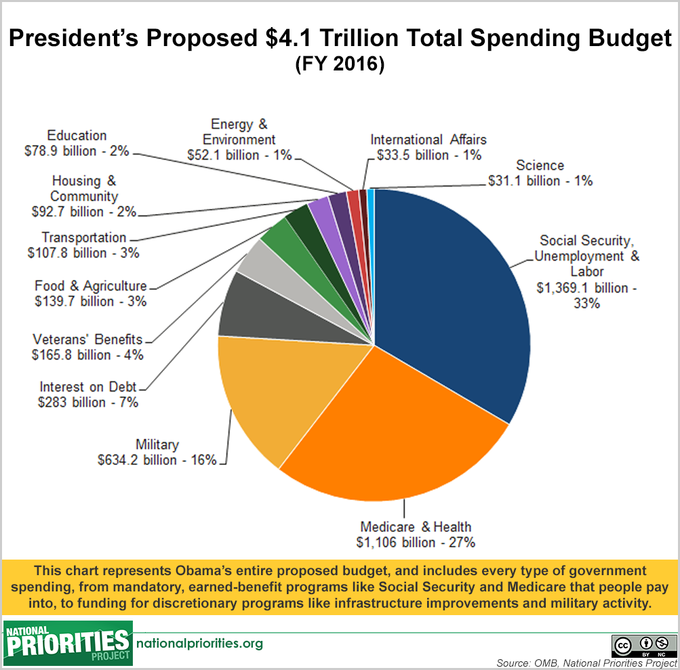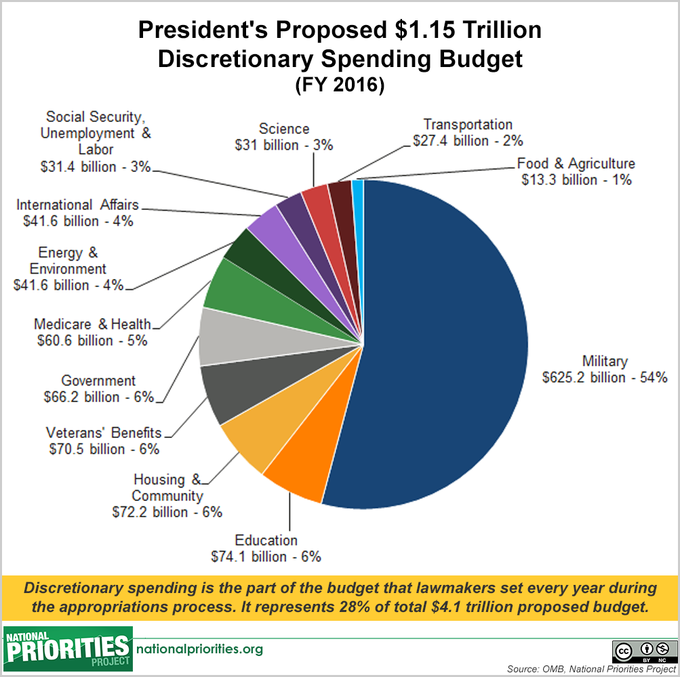President Obama Proposes 2016 U.S. Budget
Total Spending

In his budget proposal for 2016, President Obama proposed $4 trillion in total spending, including more than $1.15 trillion in discretionary spending, an increase of about 2 percent relative to 2015 enacted levels. President Obama proposes spending levels for 2016 that exceed sequestration’s spending caps by $74 billion. Spending increases are about equally split between defense and non-defense program. Defense programs – including the Department of Defense, nuclear weapons, and related activities would receive $38 billion over fiscal 2016’s sequestration cap on defense programs while non-defense programs would receive an additional $37 billion above the sequestration cap. [1]

The president proposes $60 billion over 10 years for a new initiative that would allow students to attend community college for up to two years tuition free and would again provide expanded Head Start and universal pre-kindergarten.
The budget also includes $478 billion in additional infrastructure spending over the next six years, which would pay for surface transportation improvements such as roads and bridges. The president proposes to pay for this through various tax reforms.
Sixty-two percent of Americans would favor raising taxes on the wealthy and corporations to fund national priorities such as education and job training. [2]
Notably, the plan includes $585 billion in discretionary funding for the Department of Defense, including a base budget of $534 billion, and war funding of $51 billion. This does not include separate programs through the Department of Energy for nuclear weapons, or other military spending. This would represent a significant increase over the analogous enacted 2015 spending level of $554 billion.
More about the President's 2016 Budget:
Taxes and Revenue
Education
Military and War
Climate Change
Social Security & Health Care
Budget Deficit
What Is the President’s Budget Request?
Full Analysis